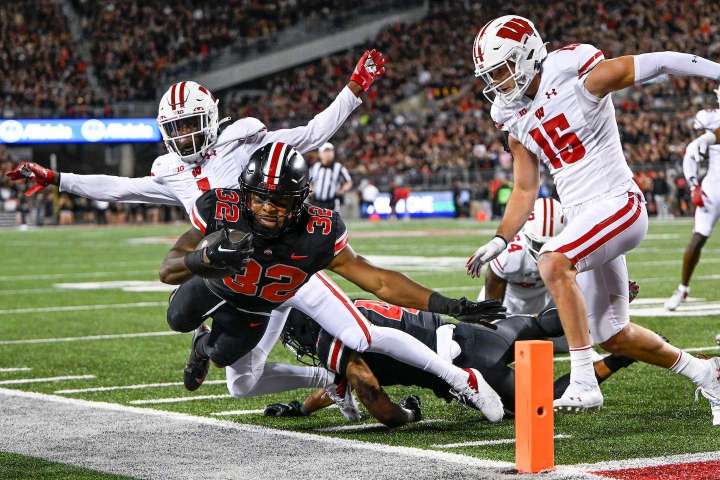With another season underway, suspend your Pecksniffian disapproval of the college football industry’s recent upheavals. They are, their authors explain, about “values.” Besides, sometimes worse is better.
Sometimes, as with the college football conference upheavals, worse is better

USC’s athletic director said “our values align” with the Big Ten. UCLA’s AD (whose department is $102.8 million in debt), said this realignment was done “for the sake of our student-athletes.” Last year, both schools received $19.8 million from Pac-12 revenue. Big Ten schools each received $46.1 million, a sum that seems paltry, now that the conference has signed a post-expansion $7 billion, seven-year TV contract. Last year, SEC schools each received $54.6 million — before the added glamour of Texas and Oklahoma.
The expansion was probably provoked by last year’s decision of Texas and Oklahoma to jump from the Big 12 to the Southeastern Conference.
Big Ten Commissioner Kevin Warren says his conference is being “innovative,” “creative,” “bold,” “strong” and “powerful” so it can “prioritize what’s important to our student-athletes.” The expansion will put “our student-athletes” on “a larger platform so they can build their careers.”
Follow George F. Will‘s opinions
FollowIn 2019, the NCAA estimates, the NFL drafted 11 percent (197) of the 1,769 eligible players from the Power Five conferences (ACC, Big Ten, Big 12, Pac-12, SEC). Being drafted hardly guarantees an NFL roster spot; the average NFL “career” lasts 3.3 years.
When Warren says expansion prioritizes what is important to student-athletes, he asserts that what is most important to them is the revamped conference’s financial windfall, which will not trickle down to the student-athletes. Many school and conference officials have been aghast because, they say, the appeal of collegiate athletics depends on its perceived “amateurism,” which is supposedly in jeopardy because players are now allowed to monetize their names, images and likenesses through endorsements worth, in most cases, a few thousand dollars.
As of 2020, in 40 states, the highest-paid public employee was a Division I college football or basketball coach. Michigan’s three highest-paid public employees are the football coaches at Michigan, Michigan State and Western Michigan; in Florida, they are the football coaches at Florida, Florida Atlantic and Central Florida; in Kentucky, they are the coaches at Kentucky, Louisville and Western Kentucky. The University of Georgia’s football coach, Kirby Smart, has a 10-year base salary of $110 million. Reportedly more than $100 million lured Lincoln Riley away from conference-switching Oklahoma to conference-switching USC.
Clemson football coach Dabo Swinney just signed a 10-year, $115 million contract extension. Players are on the move, sometimes following their migratory coaches. In the past 12 months, more than 2,100 players from the 131 schools in the Division I Football Bowl Subdivision — the major programs — have entered what the NCAA calls the “transfer portal,” which facilitates labor mobility to serve the college football industry.
The recent reshuffling of conferences probably presages the emergence of two super conferences: Clemson and Miami might depart from the ACC, taking with them a large portion of its prestige. Clemson’s coach ($9.3 million annually) and Miami’s coach ($80 million over 10 years) cannot relish the prospect of trying to recruit top-tier talent to a second-tier conference.
The industry’s new landscape, littered with the smoldering ruins of torched traditions, was produced by cold economic reasoning, as befits industrial management. Lubricated by an unsentimental disregard for historic rivalries, this arrangement should at long last silence the increasingly ludicrous pretense that college football’s premier programs are anything other than entertainment behemoths.
George Cross, the University of Oklahoma’s president (1943-1968), was perhaps being droll when he said, “We’re trying to build a university our football team can be proud of.” Drollery is not normal in big business.
Now the college football industry has announced that it will triple, to 12, the number of teams eligible for the postseason playoffs. Mark Keenum, Mississippi State University’s president, says that although additional revenue will be “available” — a curious locution — the motivation is more opportunity for participation by the student-athletes. They will be done with the expanded playoffs in time for spring football practice.






